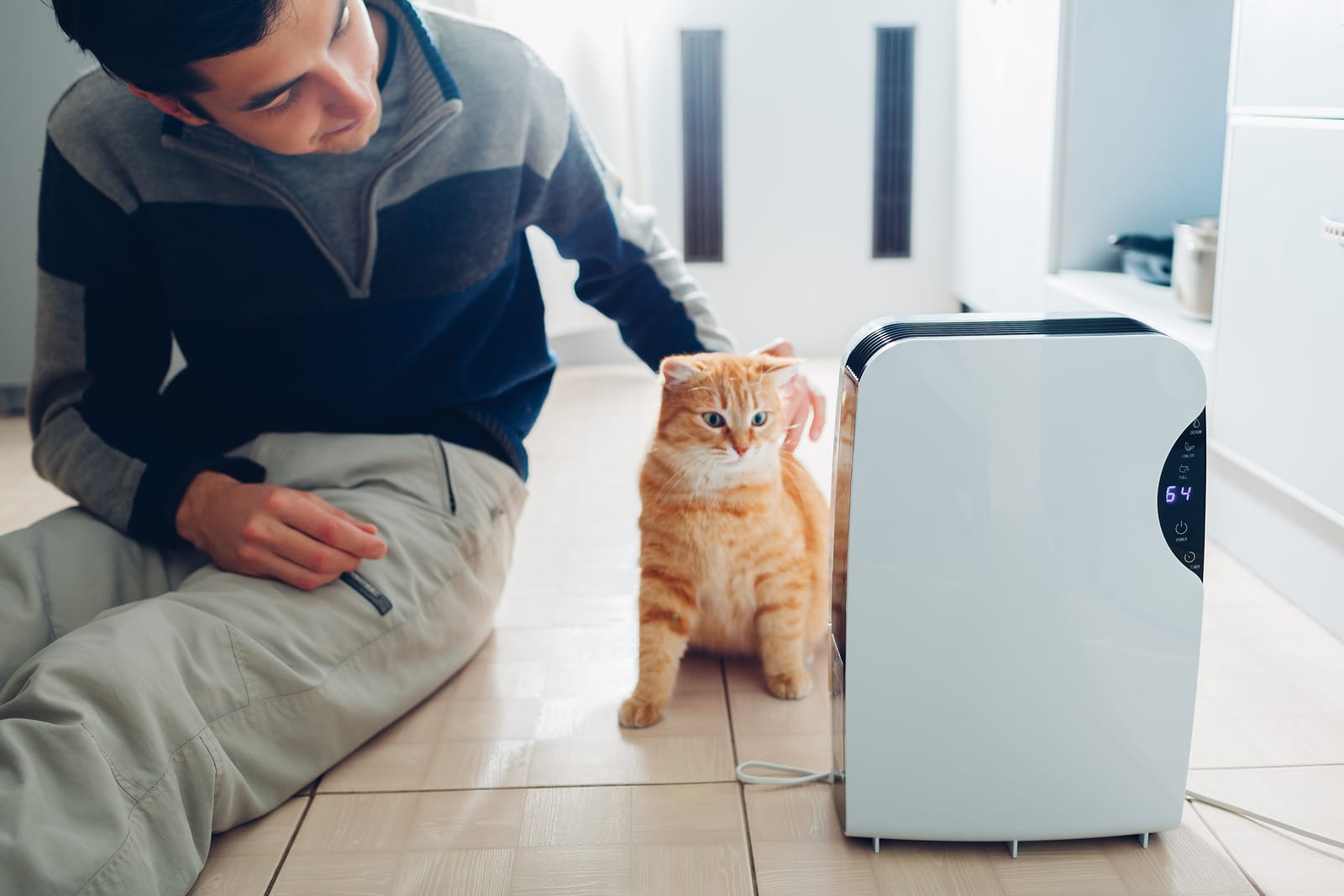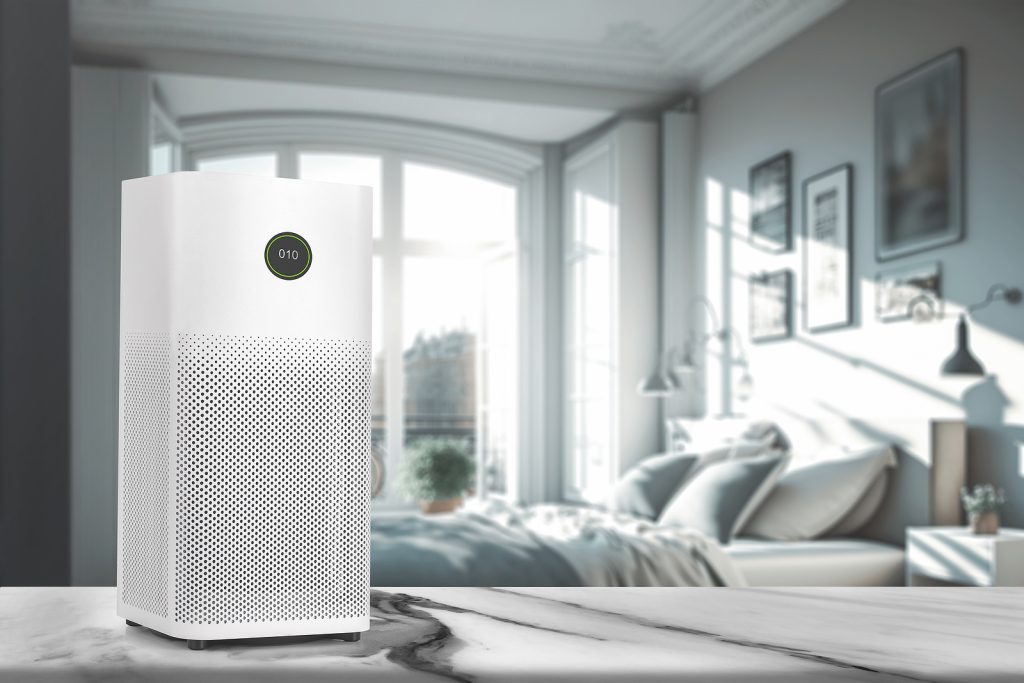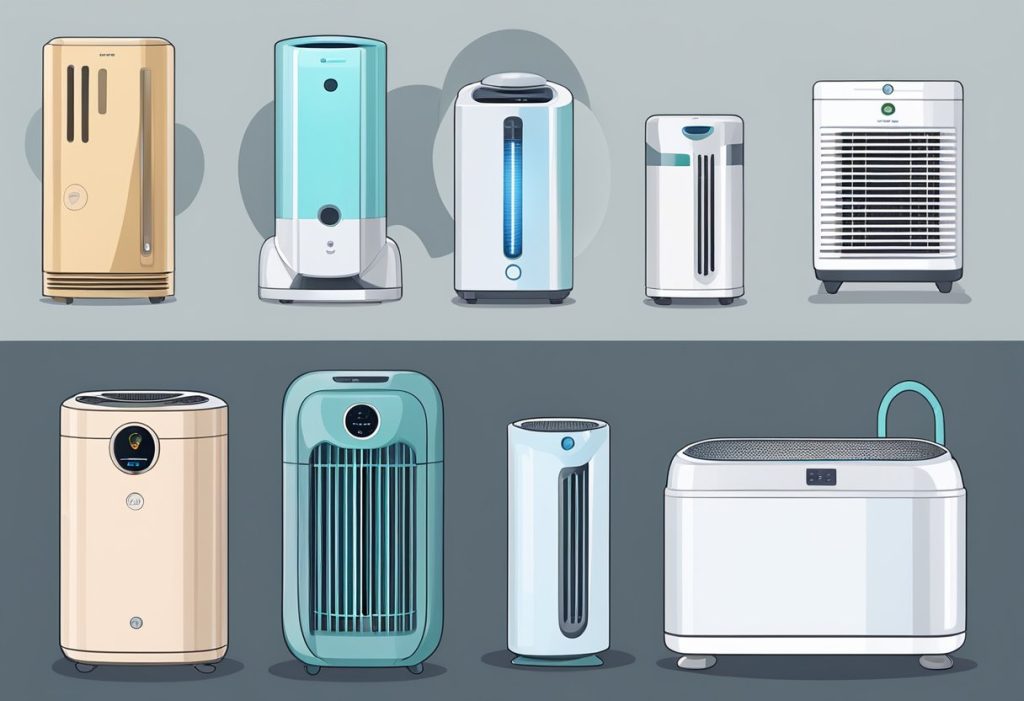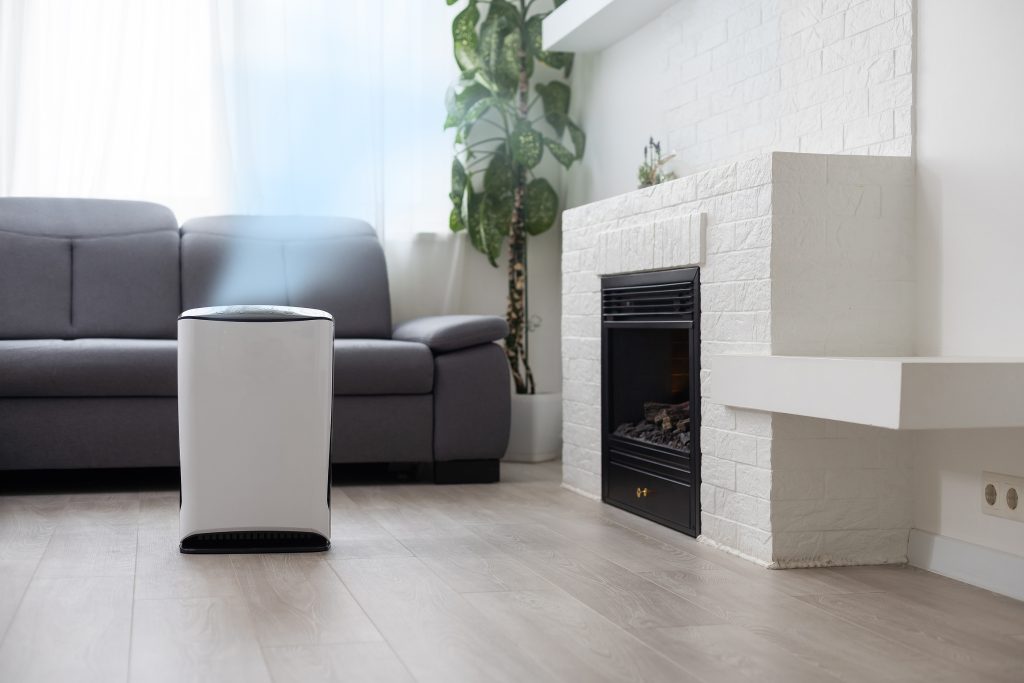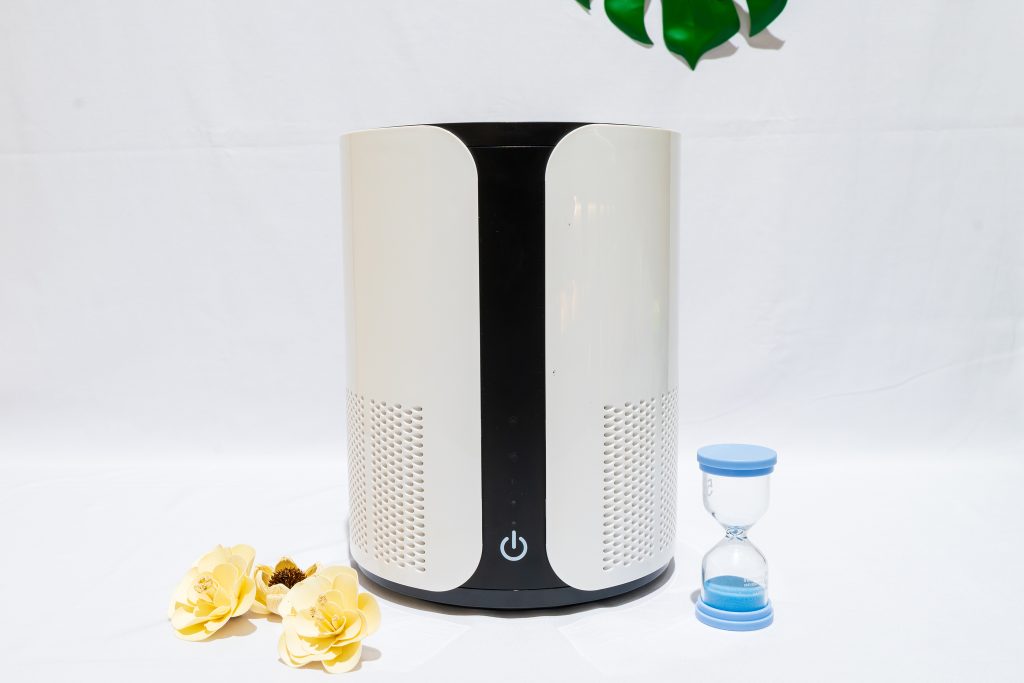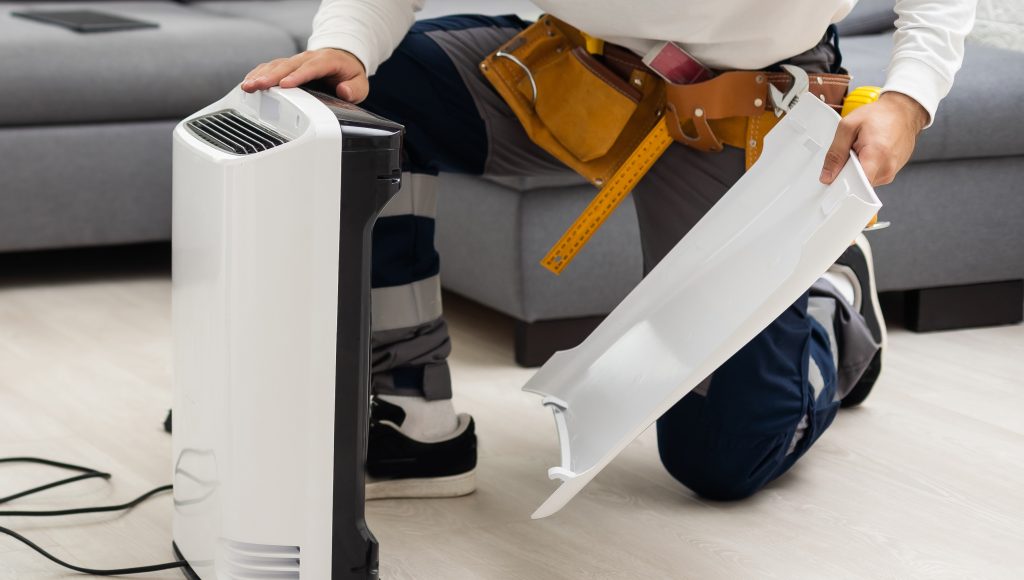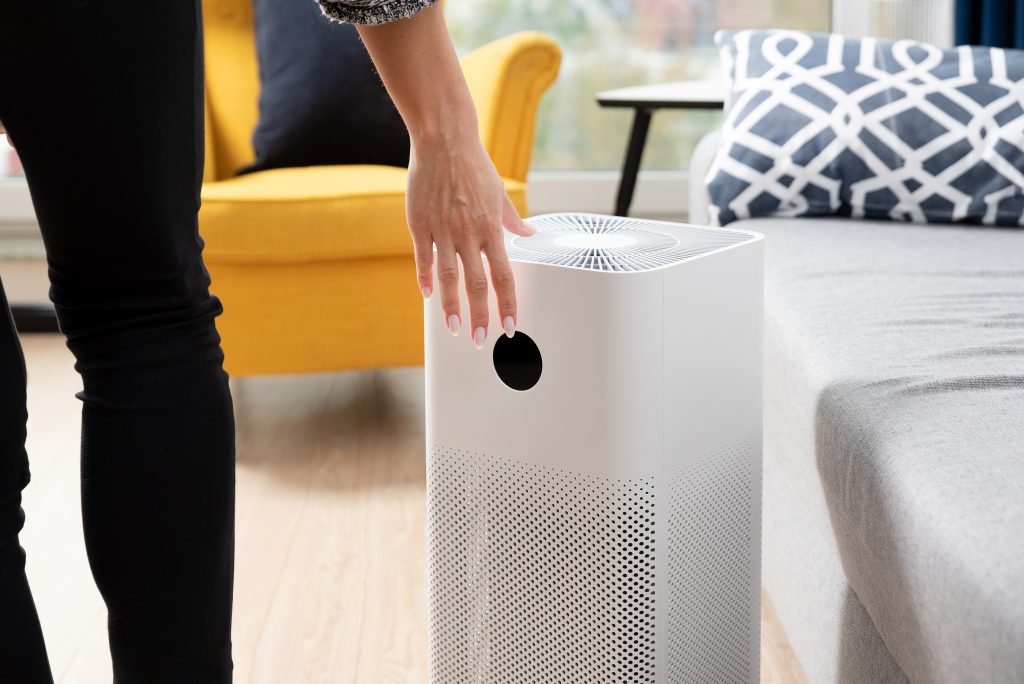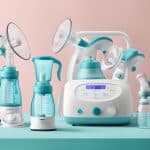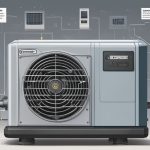Seeking the Best Air Purifier? Our Ultimate Buyer’s Guide Unveiled
Clean air is necessary daily, influencing our health and overall well-being. Air purifiers are popular household appliances that improve indoor air quality by removing allergens, pollutants, and other contaminants. However, finding the perfect air purifier can be quite challenging, given the wide variety of options in today’s market.
Our ultimate buyer’s guide is designed to help you easily navigate the world of air purifiers, providing insightful information about the various types, features, and factors to consider while purchasing. By understanding your specific needs and exploring top brands and maintenance tips, you can make an informed decision and ensure the air in your home is pure and safe.
With knowledge from our comprehensive buyer’s guide, you will be well-equipped to choose the best air purifier for your unique living space and lifestyle. So, let’s embark on this journey to cleaner air together and discover the right air purifier to meet your needs.
Understanding Air Purifiers
What is an Air Purifier?
An air purifier is designed to remove contaminants from indoor air, making it cleaner and healthier for the occupants. These appliances typically utilize various filtration techniques, such as HEPA filters, activated carbon, or UV light, to capture and neutralize pollutants like dust, allergens, and harmful chemicals. With improved air quality, air purifiers can provide numerous benefits to people who suffer from allergies, asthma, or other respiratory issues.
Importance of Clean Air
Clean air is essential for maintaining good health and overall well-being. Indoor air pollution can result from various sources, such as cooking, cleaning products, tobacco smoke, and even outdoor air pollutants. Prolonged exposure to these contaminants can cause various adverse health effects, including coughing, shortness of breath, throat irritation, and exacerbating existing respiratory conditions.
Investing in a high-quality air purifier can significantly reduce indoor air pollution levels, thereby improving the indoor environment and promoting better health for occupants. By eliminating harmful pollutants, air purifiers can aid in preventing or reducing respiratory issues and promoting a healthier lifestyle.
Air Quality and Health
Air quality directly impacts human health, with poor air quality contributing to respiratory problems, allergies, and cardiovascular issues. It is essential to be aware of the air quality in your living and working spaces and take appropriate measures to improve it.
Air purifiers play a significant role in enhancing indoor air quality by removing harmful particles and allergens. When selecting an air purifier, it is crucial to consider its ongoing maintenance and electricity costs to ensure it fits your budget and requirements. Investing in a suitable air purifier and maintaining good indoor air hygiene can create a healthier and more comfortable environment for yourself and your loved ones.
Types of Air Purifiers
Air purifiers come in various types, each with technology to combat airborne pollutants. In this buyer’s guide, we will discuss the four main types of air purifiers: True HEPA Filters, Activated Carbon Filters, Ionizers, and Ozone Generators.
True HEPA Filters
True HEPA filters are among the most popular and effective types of air purifiers. A True HEPA filter uses HEPA technology to capture at least 99.97% of particles as small as 0.3 microns, including dust, pollen, pet dander, and mold spores. The H13 True HEPA filter targets 99.9% of bacteria and viruses. While True HEPA filters are highly efficient, replacing them regularly is important to maintain optimal performance.
Activated Carbon Filters
Activated carbon filters are designed to adsorb gases, chemicals, and odors. These filters comprise a porous, carbon-based material treated with oxygen to open millions of tiny pores. When air passes through the activated carbon filter, pollutants such as smoke, volatile organic compounds (VOCs), and various odors are trapped and neutralized. Activated carbon filters may be combined with other filtering technologies, such as True HEPA filters, for a comprehensive air purification solution.
Ionizers
Ionizers, or electronic air purifiers, use high-voltage electrical charges to generate negatively charged ions. These ions attach themselves to airborne particles, making them larger and heavier so they can be easily captured by a traditional filter or more likely to settle on surfaces to be cleaned later. Although ionizers can help remove some pollutants, they are less effective for others, such as VOCs, bacteria, and viruses.
Ozone Generators
Ozone generators are a subset of air purifiers that intentionally produce ozone gas to eliminate pollutants. Ozone is a highly reactive molecule that can interact with and break down airborne contaminants like odors, chemicals, and bacteria. However, ozone generators are controversial due to the potential risks associated with ozone exposure, such as respiratory irritation and exacerbation of pre-existing conditions. Before investing in one, research and understanding the implications of using ozone generators properly is crucial.
In conclusion, selecting the right air purifier depends on your needs and the pollutants you aim to eliminate. True HEPA and activated carbon filters are highly effective for removing particles and odors, respectively, while ionizers may offer some benefits in combination with other technologies. Considering an ozone generator, take extra caution due to potential health risks.
Key Features to Consider
There are several key features to consider when looking for the best air purifier. The following sub-sections will discuss five important factors: performance, room size compatibility, air quality monitor, energy consumption, and smart features.
Performance
An air purifier’s performance is mainly determined by its filter type and efficiency. High-efficiency particulate air (HEPA) filters are widely recommended due to their capability to capture 99.97% of particles as small as 0.3 micrometers source. This helps ensure your air purifier effectively removes allergens, dust, and other pollutants from the air.
Room Size Compatibility
Choosing the right air purifier depends on the room size you need it for. Most air purifiers are designed for specific room sizes, so it’s important to know the square footage of the space where the device will be used. You can find this information on the product’s specification pages. A great air purifier should be able to filter the air in your room at least two times per hour for optimal results source.
Air Quality Monitor
An air quality monitor is a useful feature that measures indoor air quality in real-time and indicates when the air purifier needs to be adjusted. Some models have built-in sensors measuring particulate matter, temperature, and humidity. This helps you easily monitor the effectiveness of your air purifier and adjust settings accordingly for optimal air quality.
Energy Consumption
Energy consumption is another factor to consider when choosing an air purifier. Energy-efficient models consume less electricity and can save money on energy bills. Look for air purifiers with Energy Star certification, which indicates that the device meets strict energy-efficiency guidelines set by the U.S. Environmental Protection Agency source.
Smart Features
Smart features enhance the convenience and functionality of an air purifier. Some models can be controlled remotely using smartphone apps, or voice commands through intelligent assistants like Alexa or Google Assistant. This allows you to adjust settings easily, receive air quality reports, and schedule purification cycles from anywhere. These smart features ensure your air purifier integrates seamlessly with your smart home ecosystem.
Leading Air Purifier Brands
Levoit
Levoit is a popular brand when it comes to air purifiers. Known for their sleek designs and high-quality performance, Levoit offers various air purifiers to suit various needs. The Levoit Core 400S is one of their top-rated models, designed to effectively remove airborne particles and allergens, making it a great choice for people suffering from allergies. The Levoit Core 300 is another popular option, providing a more compact solution for smaller spaces.
Dyson
Dyson is a well-known household name recognized for their innovative and quality home appliances. Their air purifiers are no exception, offering powerful filtration systems and multi-functionality. The Dyson Pure Hot+Cool is a versatile option that functions as a heater, fan, and air purifier. Using a True HEPA filter, Dyson air cleaners can clear up to 99.97% of airborne pollutants, including wildfire smoke.
Coway
Coway is a reputable brand in the air purifier market, known for its high-performance devices. The Coway Airmega ProX 3522F stands out, offering exceptional performance even at lower speeds. Weighing 50 pounds, this powerful machine can handle large rooms and provides efficient air filtration.
Blueair
With a focus on aesthetics and simplicity, Blueair offers air purifiers that are not only effective but also visually appealing. The Blueair Blue Pure 311 Auto is ideal for medium-sized rooms and can filter the air in 12 minutes. Its auto mode adjusts the speed depending on the air quality, ensuring optimal performance at all times.
Honeywell
As a well-established brand in the air purifier industry, Honeywell offers a diverse range of devices designed to cater to various needs. The Honeywell HPA300 is one of their top choices for allergy sufferers, featuring a powerful HEPA filter that captures airborne particles as small as 0.3 microns.
Winix
Winix air purifiers are popular for their value, providing top-notch performance without breaking the bank. The Winix 5500-2 is a highly-rated model that excels in particle and chemical removal while boasting low filter replacement costs. It’s an ideal choice for those seeking an efficient and budget-friendly solution.
Maintenance and Costs
Maintaining an air purifier is essential for its optimal performance and longevity. This section discusses the various aspects of air purifier maintenance and costs, including filter replacement, budget considerations, and environmental impact.
Filter Replacement
Air purifiers typically use HEPA, carbon, and washable filters to clean the air effectively. The filter life and replacement frequency depend on the manufacturer’s recommendations and usage patterns. Regularly replacing the filters ensures that your air purifier operates at peak efficiency, removing allergens, pollutants, and odors from your indoor environment.
Washable filters offer the advantage of being reusable, saving you money in the long run. However, they may be less effective at trapping smaller particles than disposable filters. Choose a compatible filter that meets or exceeds the air purifier’s original filter specifications when replacing filters.
Budget Considerations
The initial purchase cost of an air purifier is only one part of the expense you must consider. Ongoing maintenance and operation costs, such as electricity usage and periodic filter replacements, can vary significantly. Some filters cost as little as $20, while others may exceed $200. It’s essential to factor in these ongoing expenses when determining the affordability of a particular air purifier.
Energy-efficient air purifiers, often validated by Energy Star certification, can help minimize electricity consumption, reducing utility expenses. Moreover, some models offer an eco mode, further contributing to an energy-efficient operation.
Environmental Impact
Beyond cost considerations, assessing the environmental impact of the air purifier you choose is also essential. The Environmental Protection Agency (EPA) suggests selecting air purifiers that are independently tested for clean air delivery rate (CADR) and energy efficiency. Doing so ensures that the product meets established standards for air purification performance and energy consumption.
Moreover, consider the environmental footprint of filter replacements. Opt for filters made from eco-friendly materials when possible, and properly dispose of used filters following the manufacturer’s guidelines or local regulations. Choosing an energy-efficient air purifier and responsibly managing filter replacements can create a cleaner indoor environment without unnecessarily contributing to pollution and landfill waste.
Allergens and Indoor Air Pollutants
Mold
Mold is a common indoor air pollutant that can trigger allergies and asthma. Mold spores can grow on damp surfaces and thrive in high humidity levels. An air purifier with a HEPA filter can effectively capture mold spores and help reduce mold-related allergies.
Dust
Dust is a mixture of particles, including dead skin cells, pet dander, and other allergens. Dust mites also contribute to poor air quality. These tiny insects can worsen allergies and asthma symptoms. A good air purifier will have a HEPA filter to trap and remove dust effectively, reducing allergens in your living space.
Pet Dander and Hair
Pet dander, tiny skin flakes shed by animals, and pet hair can cause allergies and respiratory issues for many people. A true HEPA air purifier will help capture pet dander and hair, thus improving the air quality for those with pet-related allergies.
Pollen
Plant pollen is a common seasonal allergen that can find its way indoors during warmer months. HEPA air purifiers effectively capture and remove pollen particles from indoor air, relieving allergy sufferers.
Bacteria and Viruses
Airborne bacteria and viruses can lead to illness and respiratory issues. Some air purifiers offer UV-C light or other technologies specifically designed to kill bacteria and viruses in the air, improving overall air quality and potentially reducing the spread of illness.
VOCs and Gases
Volatile organic compounds (VOCs) are harmful gases released from various household items, such as cleaning products, paint, and furniture. Gases like radon can also be found indoors. An air purifier with an activated carbon filter can help remove VOCs and gases, reducing exposure and promoting a healthier living environment.
Smoking and Cooking Odors
Smoke from cigarettes, cigars, and cooking processes can negatively impact indoor air quality. Cooking also releases odors and particles that irritate the eyes, nose, and throat. Air purifiers with activated carbon filters effectively remove smoke particles and odors, improving air quality for those sensitive to smoke and cooking smells.
Air Purifiers for Specific Needs
When looking for the perfect air purifier, it’s essential to consider the specific needs of your household. This section will discuss air purifiers for allergies and asthma, large rooms, and budget options.
Air Purifiers for Allergies
For individuals suffering from allergies, an air purifier can be a game-changer. The best air purifiers for allergies should feature a True HEPA filter, which captures 99.97% of airborne particles as small as 0.3 microns. This includes allergens such as pollen, mold spores, and pet dander. Choosing a model with a high Clear Air Delivery Rate (CADR) is also important to ensure efficient air cleaning in the room.
Air Purifiers for Asthma
Air purifiers can significantly help those with asthma by reducing the presence of airborne irritants and particulates. It’s recommended to look for a cleaner certified by the Asthma and Allergy Foundation of America (AAFA), ensuring it meets strict standards for removing asthma triggers. A combination of a True HEPA filter and an activated carbon filter is ideal for tackling particulates and odors that can exacerbate asthma symptoms.
Air Purifiers for Large Rooms
An air purifier with a high CADR rating is necessary for larger spaces to ensure efficient air cleaning. Models such as the Blueair Blue Pure 211+ are designed for spacious rooms and consume less power, making them energy-efficient. Additionally, consider a cleaner with a higher fan speed and a larger filter surface area to handle the increased air volume.
Affordable Air Purifiers
When shopping on a budget, look for an air purifier that offers the essential features without breaking the bank. Key options to consider are True HEPA filters and a reasonable CADR rating. According to Consumer Reports, maintenance costs also play a factor, as some filters can range from $20 to over $200. Remember that some affordable purifiers may lack added features like a timer or smart connectivity, but the primary focus should remain on air cleaning performance.
By understanding your needs, you can confidently choose the right air purifier to improve indoor air quality and create a healthier environment.
Additional Considerations
Setup and Ease of Use
When selecting an air purifier, it’s important to consider how easy it is to set up and use. Most cleaners come with simple instructions, and many are designed for quick, straightforward assembly and operation. Look for models with user-friendly controls, clear displays, and easy-access filter compartments for hassle-free changes.
Particulate Matter and Indoor Air Quality
Air purifiers trap and remove particulate matter, including dust, pollen, pet dander, and smoke particles. A key factor in evaluating an air purifier’s effectiveness is its ability to improve indoor air quality. Opt for models with high Clean Air Delivery Rate (CADR) ratings, which measure the volume of filtered air the purifier delivers.
Air Purifier Testing Methodology
When comparing air purifiers, it’s crucial to understand the testing methodology employed by manufacturers and third-party organizations. Reputable manufacturers typically test their products using standard protocols set by organizations such as the Association of Home Appliance Manufacturers (AHAM). Look for products that have undergone rigorous testing and provide detailed information on their performance metrics.
Smart App Connectivity
Many air purifiers have smart features and app connectivity in today’s connected world. This allows users to monitor and control the device remotely, track air quality, and receive filter change reminders. Some models even integrate with popular smart home systems for seamless automation. While not an essential feature, app connectivity can provide added convenience and peace of mind.
Pros and Cons
When considering air purifiers, knowing the pros and cons is important. By understanding the various advantages and disadvantages, you will be better able to make an informed decision.
One significant advantage of air purifiers is their ability to remove common indoor air pollutants such as dust, pollen, and pet dander. The Shark HC502 3-in-1 Air Purifier with NanoSeal HEPA filter is highly efficient at cleaning the air, making it a suitable option for allergy sufferers.
Air purifiers can also help reduce harmful chemicals and odors. The Winix 5500-2 is a good example of an air purifier that effectively removes chemical contaminants and bad smells while being budget-friendly. Moreover, some air purifiers, such as the Dyson Pure Hot+Cool triple-duty machine, offer additional functionality like heating and cooling, providing multiple benefits with a single appliance.
On the other hand, there are a few drawbacks to using air purifiers. One of the major disadvantages is the ongoing costs. Air purifiers require periodic replacement of filters, which can add to the long-term expenses. Furthermore, Consumer Reports mentions that some models may be noisy, especially when operating at high speeds. This may be an important factor to consider for those who are sensitive to noise.
Another potential disadvantage is that not all air purifiers are equally effective at filtering various pollutants. It is crucial to select a device with adequate filtering capabilities based on the specific needs of your home. Additionally, air purifiers may have a limited impact on outdoor pollution or if the indoor sources of pollutants, such as cigarette smoke or excessive moisture, are not addressed, leading to mold.
Air purifiers offer numerous benefits, such as reducing common indoor pollutants, removing allergens, and improving indoor air quality. However, knowing their limitations and potential drawbacks, including ongoing filter replacement costs, noise levels, and varying efficiency levels in filtering different contaminants, is important.
Environmental Impact
Air purifiers significantly enhance indoor air quality by removing pollutants, allergens, and dust particles. However, understanding their environmental impact is crucial for making fair choices. Let’s weigh both the positive and negative impacts of air purifiers.
On the positive side, air purifiers contribute to greener living by reducing indoor air pollution. They employ various filtration technologies, such as HEPA filters, to capture and retain particles as small as 0.3 microns. This results in improved air quality, which benefits those suffering from allergies, asthma, or other respiratory issues.
Moreover, models like the Blueair Blue Pure 211+ offer efficient particle removal at different speed settings and come with machine-washable fabric filters. The washable filters lead to less waste generation, making them a more environmentally friendly choice.
On the negative side, air purifiers consume energy, which might add to your electricity bill and overall carbon footprint. For instance, the Honeywell air purifier is a power hog, drawing up to 117 watts on its highest speed setting. In contrast, the Blue Pure 211+ requires significantly less energy. Hence, comparing power consumption among different models is crucial before purchasing.
Lastly, not all air purifiers are equal regarding their environmental impact. Some may produce ozone as a byproduct, which harms human health and the atmosphere. Choosing air purifiers without ozone production is essential to minimize potential harm.
In conclusion, considering the environmental impact is vital to selecting an air purifier. Opt for models with energy-efficient mechanisms and washable filters, contributing to a greener and healthier indoor environment.
Frequently Asked Questions
What features should I consider when buying an air purifier?
When choosing an air purifier, please pay attention to its filtration system, room coverage, noise level, and filter replacement costs 1. True HEPA filters help remove 99.97% of airborne pollutants, whereas activated carbon filters are useful for removing odors 2. Compare the Clean Air Delivery Rate (CADR) to identify the unit’s efficiency in purifying the air 1.
How can I choose the best air purifier for allergy and dust reduction?
To select an air purifier effective in allergy and dust reduction, look for a device with a True HEPA filter. This filter can trap tiny particles like pollen, dust mites, and pet dander 2. Additionally, consider the CADR and room coverage to ensure the air purifier effectively cleans the air in the space you intend to use it 1.
Which air purifiers are most effective for smoke removal?
Air purifiers with activated carbon filters can help remove smoke particles and odors 2. Also, units with a high CADR for tobacco smoke specifically are suitable for smoke removal. Combining True HEPA and activated carbon filters ensures optimal performance 1.
What are the top-rated air purifiers for bedrooms?
Select a quiet, compact, and energy-efficient air purifier, as these features are important for bedroom use 3. Reviewers frequently praise the Winix 5500-2 as a value option that performs well in particle and chemical removal while maintaining low filter replacement costs 3.
How do Honeywell air purifiers compare to other popular brands?
Honeywell air purifiers are often praised for their performance 4. However, they tend to consume more power than competitors such as Blueair Blue Pure 211+ 4. When evaluating different brands, consider energy efficiency, filter replacement costs, and overall performance to determine which best suits your needs.
Which air purifiers are the best for the upcoming year 2024?
As technology advances, new air purifier models will likely emerge. Monitor expert reviews and customer feedback to identify the top-performing units in 2024. Look for the latest developments in air filtration technologies, energy efficiency, and smart features contributing to a superior air purifying experience.
Footnotes
- [https://www.consumerreports.org/appliances/air-purifiers/buying-guide/] ↩ ↩2 ↩3 ↩4
- [https://www.goodhousekeeping.com/appliances/air-purifier-reviews/g22866172/best-air-purifiers/] ↩ ↩2 ↩3
- [https://reviewed.usatoday.com/home-outdoors/best-right-now/the-best-air-purifiers] ↩ ↩2
- [https://www.nytimes.com/wirecutter/reviews/best-air-purifier/] ↩ ↩2
Conclusion
Investing in an air purifier is an important decision affecting the overall air quality in your living environment. It’s essential to consider factors such as filter type, air changes per hour, and energy efficiency before making your final choice. Among the available options, the Coway Airmega ProX 3522F is a powerful and reliable choice to improve your home’s air quality.
Remember that filter replacement costs can vary, with some models requiring filters priced anywhere from $20 to more than $200. Checking the Clean Air Delivery Rate (CADR) of the air purifier will give you an idea of how effectively it filters out particles in the air. Opting for a model that features a True HEPA filter will ensure it can remove up to 99.97% of airborne pollutants.
Also, pay attention to the energy consumption of your chosen air purifier. Some models, like the Honeywell, tend to be power-hungry. Comparing their wattage could save you money on electricity bills in the long run. Additionally, consider a versatile device like the Dyson air purifier, a heater, a fan, and an air purifier all in one.
In summary, focus on selecting an air purifier that caters to your needs and offers the best performance within your budget. Considering these factors will enable you to provide a healthier living environment for you and your loved ones.

